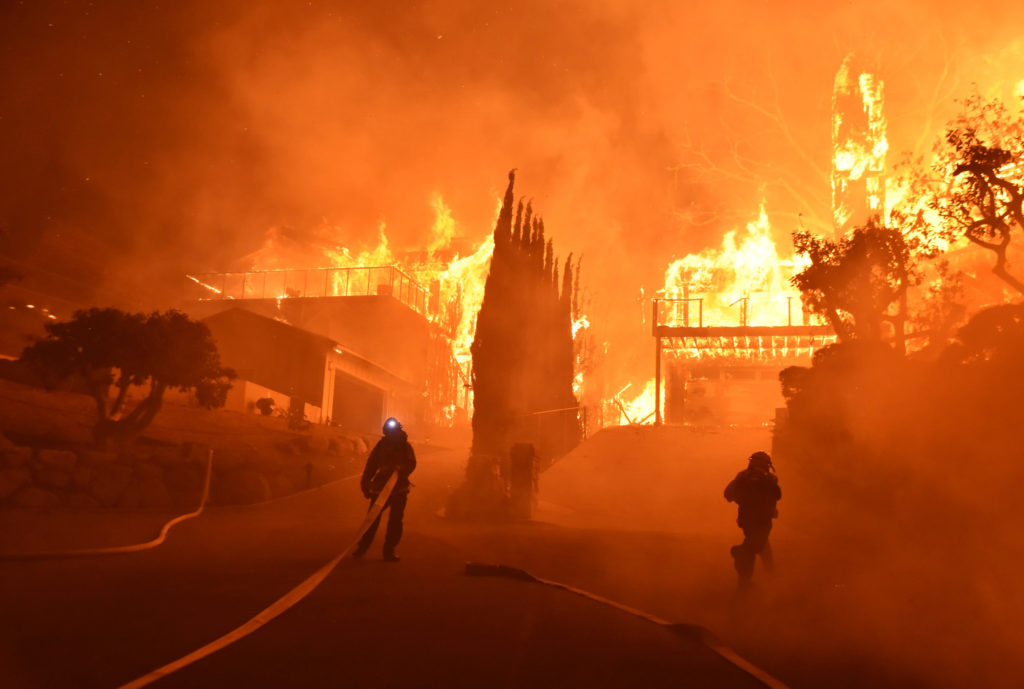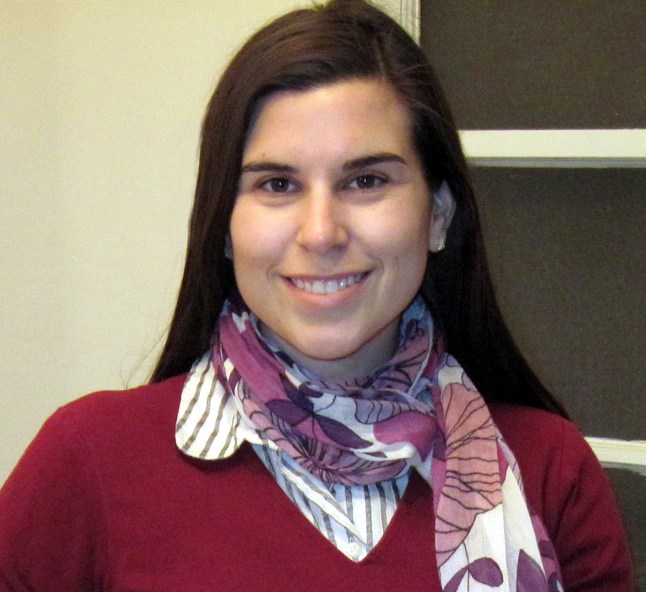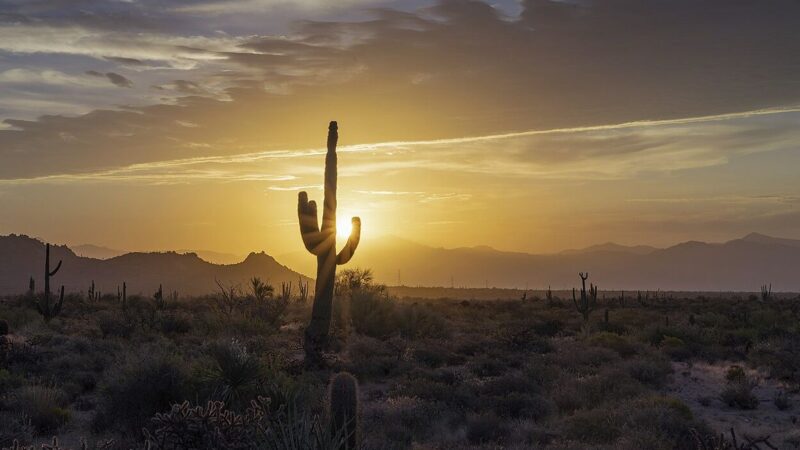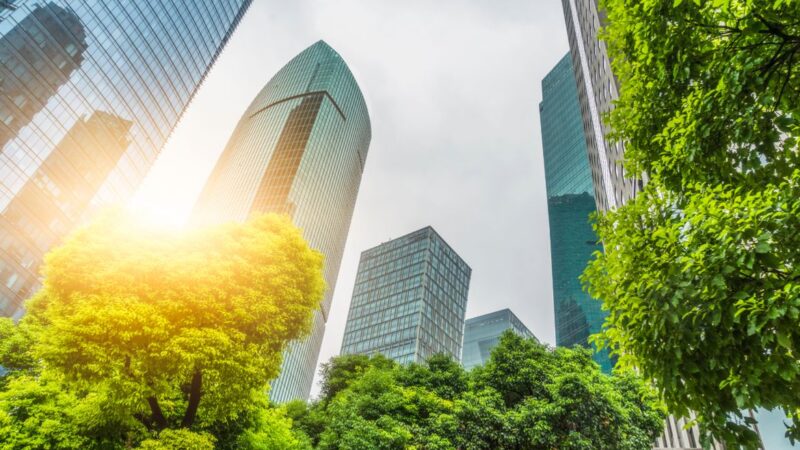
UCLA experts explain why California is burning in December
Record-breaking weather consistent with climate change is fanning the flames
The Thomas Fire. The Creek Fire. The Rye Fire, Skirball Fire, Lilac Fire and Liberty Fire. Even in Southern California, six wildfires in four days is a lot to see tear through housing developments and close one of the nation’s busiest freeways.
“Southern California does see December wildfires, but not nearly a quarter million acres like we’re seeing in Ventura and Santa Barbara, and not half a dozen very destructive fires in early December,” said Daniel Swain, a climate scientist with the UCLA Institute of the Environment and Sustainability.
The difference this year is a number of record-breaking weather events consistent with climate change, said Swain and other UCLA climate experts from IoES.
“What was so unusual is the combination of unusually wet conditions last winter, a record warm autumn and near record-low autumn precipitation, all of which mean more and drier vegetation, which is fuel for these fires,” said Swain, who gained a following for his clear and timely scientific explanations online. “These strong Santa Ana winds in December by themselves aren’t unusual, but what is really unusual is to have no rain and these high autumn temperatures. The combined effect is what makes it so problematic.”
Santa Ana winds are hot, dry winds from the high desert that get drier as they blow, sometimes making it even drier within 10 miles of the beach than in the desert.
“The humidity levels that we’ve seen this week are just about as dry as they can physically get, and we’ve set some daily records,” Swain said. “The temperature extremes — a record-warm summer and autumn — are exactly what we expect to occur given climate change, and there’s evidence that autumn and spring are likely to become even drier, even if our annual precipitation doesn’t change much.”
That means Southern California can expect this to happen more often, said Aradhna Tripati, a paleoclimatologist, UCLA professor of geology and member of IoES.
“Last year’s stormy and wet winter, coupled with this year’s record-breaking high temperatures, and our current dry winter conditions, mean that we are extremely susceptible to fires — and this problem is going to continue and get worse,” Tripati said. “This will create a whole cascade of problems, from loss of life and homes, to health problems associated with the poor air quality, to rising insurance premiums, to housing shortages, to movement of people due to these climate change–linked natural disasters.”
This year’s fire season was anticipated by UCLA researchers like Glen MacDonald, an international authority on drought and climate change, a distinguished professor of geography and member of IoES who has studied how previous natural warm periods can help predict what might happen during human-driven climate change.
“Even more fires could be in store for the future as human activity continues to drive climate change,” MacDonald said in October. “We will have a wet year when fine fuels will grow and accumulate, and then we will be hit by very dry conditions, which will dry out soil surfaces and vegetation … and the fuel from the wet year is going to cause fires during dry periods. That is the worst of all possible worlds, and that is what keeps me awake at night.”
While the average rainfall in the decades to come may not change much, the region is likely to swing back and forth between extremes of wet and dry years, according to research by UCLA climate-change expert Alex Hall, a professor of atmospheric and oceanic sciences and a member of IoES.
“Global climate models, the main tools we have to make future climate projections … show greater swings between extremely wet and extremely dry years,” said Hall, who, along with other researchers, was recently announced as a recipient of a $4 million UC Multicampus-National Lab Collaborative Research and Training Award. “The bigger swings in precipitation from year to year may also increase fire risk: The wet years lead to more buildup of fuels, and the dry years dry those fuels out more.
“Normally the rains would begin in November and remoisten the vegetation, but this year we’ve had almost no precipitation so far,” Hall added. “The combination of the wet winter last year and the dry winter so far this year is a key reason for the fires. It is extremely unusual to have large Santa Ana–driven fires at this time of year.”
Climate change will also cause temperatures in the Los Angeles region to rise an average of 4 to 5 degrees Fahrenheit by the middle of the century, with an increase in the number of extremely hot days.
“With a warming climate, we expect the relative humidity of Santa Ana events to decline, so the low humidity this time is another feature that is consistent with future projections,” Hall said. “The changes our region will face are significant, and we will have to adapt. Every season of the year in every part of the county will be warmer.”
Hall’s research into Santa Ana winds showed the gusts can be expected to increase burn areas by more than 60 percent by the middle of the century, primarily due to drier air.
And drier air is exactly what Swain is seeing right now.
“Last week, the entire column of air above your head had almost no water in it,” Swain said. “Effectively, given the margin of uncertainty, humidity late last week was as low as it’s ever been.”
And, Swain noted, there are still several days of Santa Ana winds still in the forecast, with no sign of rain.
This story was originally published by UCLA Newsroom.
TOP IMAGE: Ryan Cullom/Ventura County Fire Department via AP




